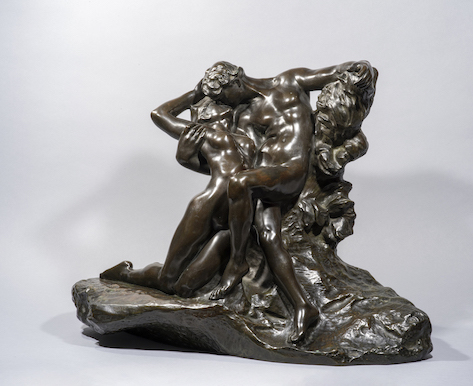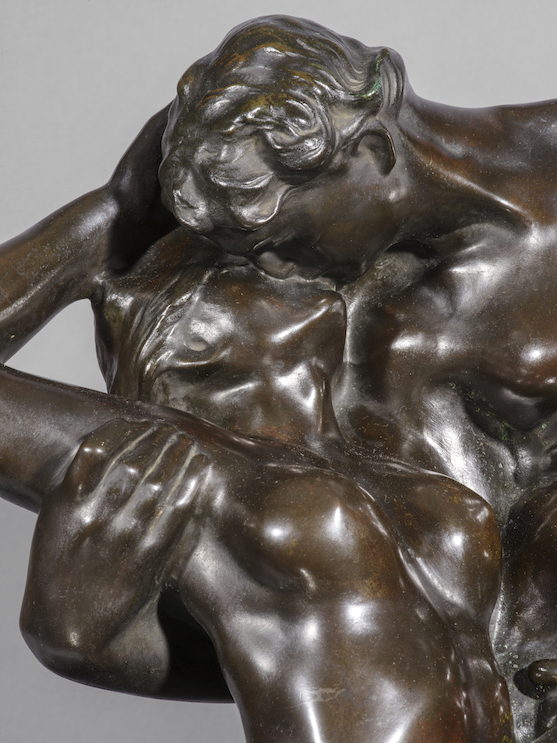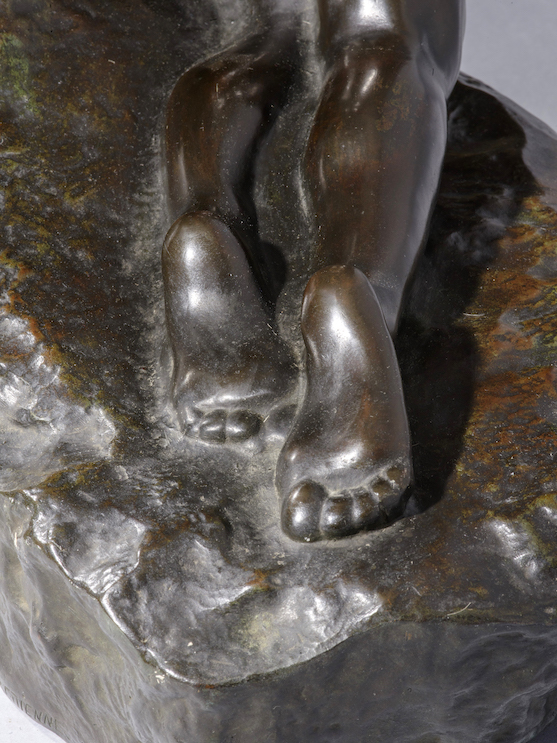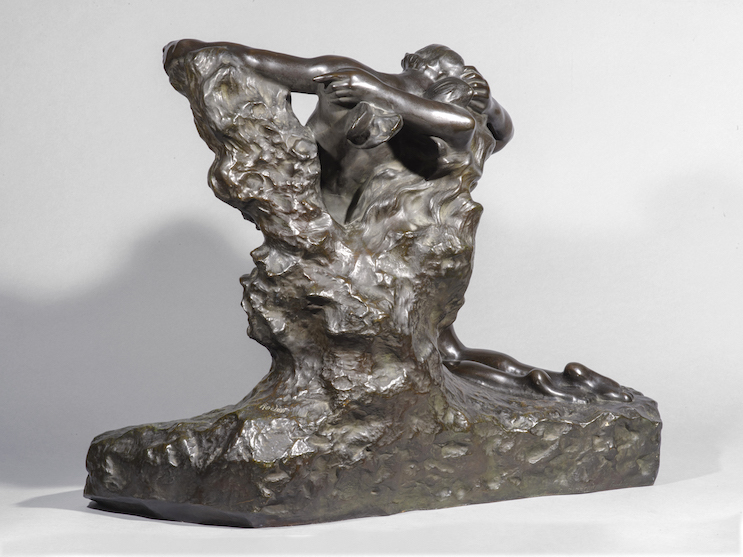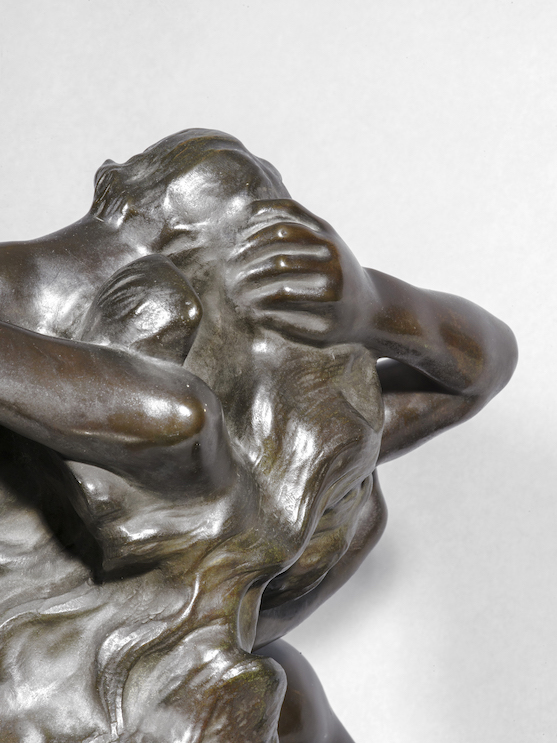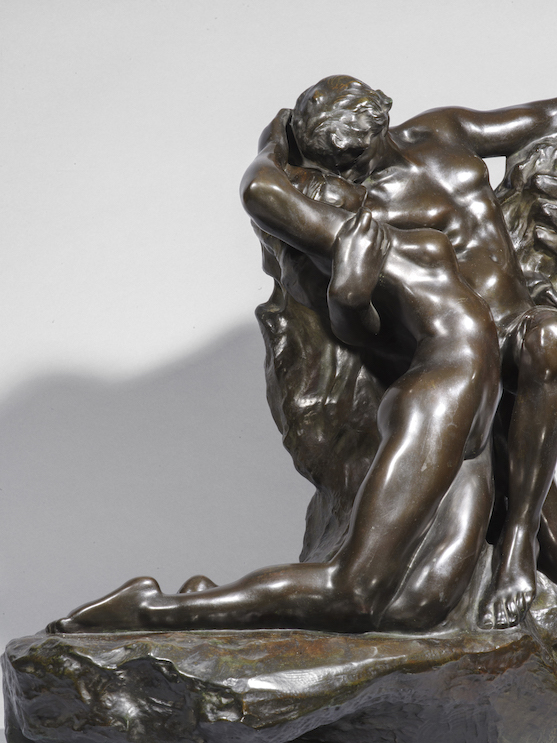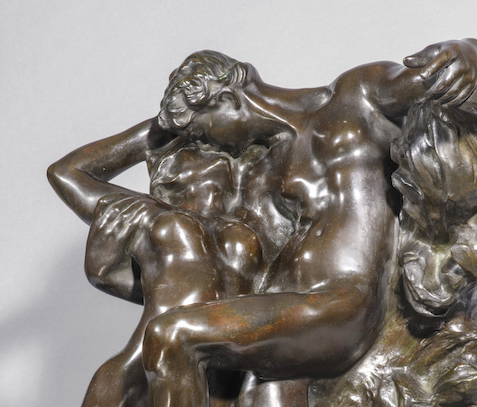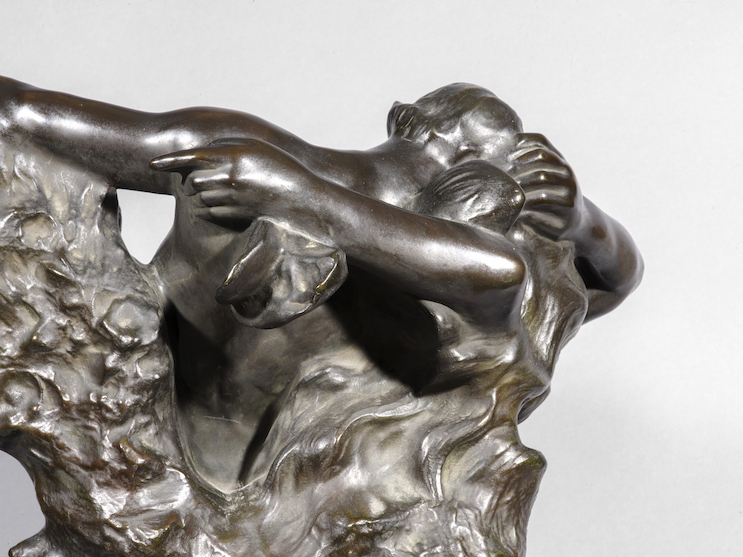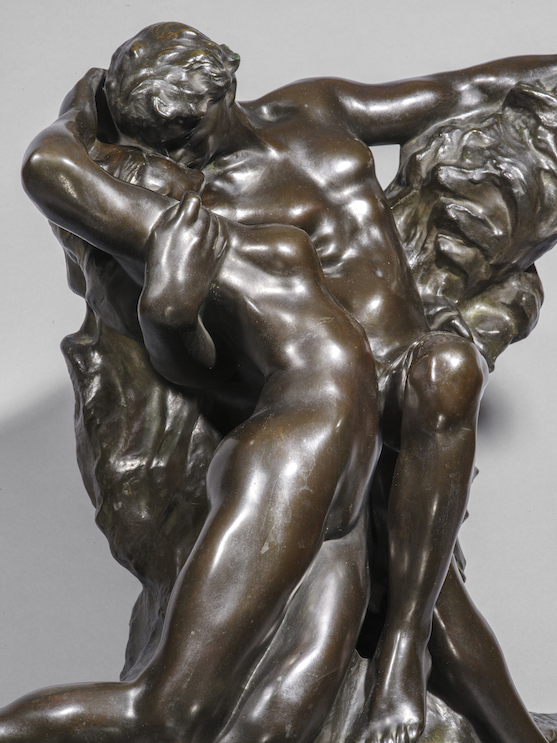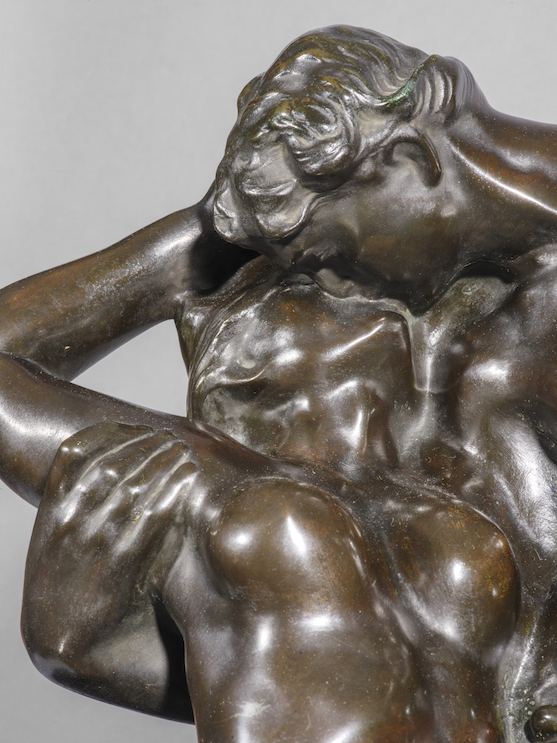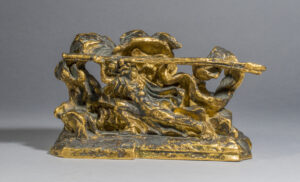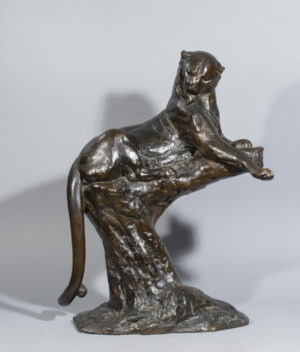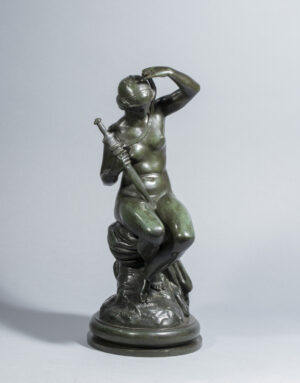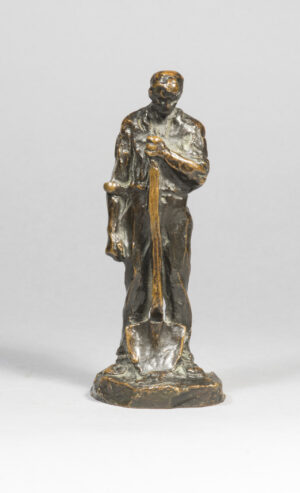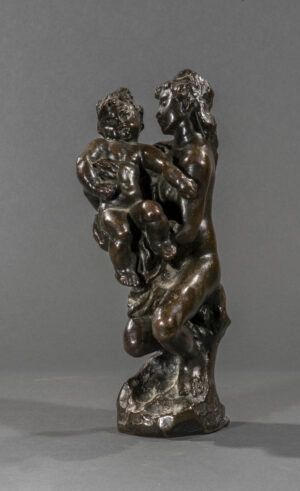Description
Reminiscent of 18th-century sculpture in its graceful movement, The Eternal Springtime was a great success, and was translated several times into bronze in numerous examples in four different sizes and ten examples were made in marble. To the initial edition of The Eternal Spring in 64 cm, 40 cm and 25 cm sizes, Leblanc-Barbedienne added the 52 cm reduction (the second largest) in 1900, produced until 1918 in 23 to 33 examples, depending on the census. Our cast, in its interior assembly, details and interior and exterior markings, is entirely consistent with those produced by Barbedienne from 1900 to 1918. The stamped letters “VL” indicate a workshop active between 1905 and 1912.
The sculpture was created during the period of intense work on The Gates of Hell, but this graceful subject was not chosen for inclusion. Exhibited at the 1898 Salon, it was a great commercial success. Like The Kiss, of which it is a kind of variant, its subject evokes the happiness of two young lovers, probably inspired by the passionate, tormented ten-year relationship between the master and his student-lover Camille Claudel. In this amorous fusion, the man opens his chest, while the female figure (taken from Torso of Adèle, inspired by Adèle Abruzzesi, one of Rodin’s favorite models) arches her back wildly. The beauty of this sculptural masterpiece lies in its ability to express erotic love, as the two figures literally melt into each other.

